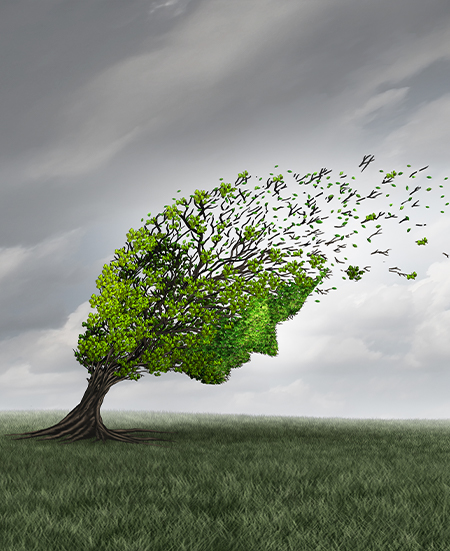Somatic Experiencing (SE) is a body-based approach to healing trauma and chronic stress. It is a highly specialized modality requiring a three-year training program for its practitioners.
 Anytime we perceive an event as traumatic…
Anytime we perceive an event as traumatic…
Our body responds as if we are in a life-threatening situation. This response can look different for each individual, but the basic physiology is the same:
Stress hormones signifying danger are released. Unless we allow time and space for our system to return to a normalized state, our body holds onto the physical imprint of the traumatic event.
Dr. Peter Levine, the creator of Somatic Experiencing, explains it along these lines…
When we face a perceived trauma or threat, our body mobilizes energy to help us survive. That energy can and does get stuck in the physical body and nervous system.
Time alone does not dispel this energy; you have to work directly with the body to release that stored energy so it can finally move through.
 Jasmine*, a young child, was walking home from school…
Jasmine*, a young child, was walking home from school…
It was an ordinary day. A neighbor was out walking their dog close by. The dog was in a grumpy mood and barked suddenly at the child. The child perceived this as traumatic and wanted to run down the street to escape the dog. She felt frozen in space and slowly moved away, glancing back feverishly to see if the dog was chasing after her.
Meanwhile, the dog was still on the leash, being scolded by the owner. Even though Jasmine was in no real danger in this scenario, her body’s response was high trauma and stress. She had wanted to flee but had become frozen instead. We can look at this as a thwarted flight response.
Jasmine calmed down when she got home and closed the front door behind her. Her heart rate slowed as she considered the possibility that she had overreacted. She even felt ashamed or embarrassed at the large response that seemed to move through her. She told her parents about the event and was reminded that she was safe and in no danger. Her cognitive brain knew she was okay, safe at home with her family.
Her body and nervous system remembered the event.
Years later, as an adult, Jasmine no longer has a clear memory…
… of this childhood event, but she knows she doesn’t like dogs and goes out of her way to avoid them.
Even her neighbor’s cute little poodle causes her heart to beat faster, and she makes excuses to cross the street when she sees them out walking.
This is starting to create a problem in her relationship, as her new boyfriend has a dog he’s crazy about.
She loves her boyfriend, and they are serious about building a life together, but her distaste for being around his dog is becoming something she needs to address.
 Somatic Experiencing (SE) was the ideal treatment for Jasmine.
Somatic Experiencing (SE) was the ideal treatment for Jasmine.
She comes in for her first SE session and tells the practitioner, “I don’t know what it is, but I’ve never liked dogs. Anytime I see one, I get so anxious that I want to leave immediately.”
Rather than try to call up an early childhood memory, the practitioner encourages Jasmine to notice what she is feeling in her body.
As Jasmine describes what happened yesterday when her boyfriend brought his dog to their lunch date in the park, the practitioner asks Jasmine to pause in the storytelling and notice her body.
Jasmine may respond, “I feel tightness in my chest like I am waiting for something to happen, like I am guarding against something.” The practitioner will also notice if Jasmine’s arms or legs are making any small or large movements, perhaps indicating that a flight response is still present in the body.
Jasmine may be sitting at the edge of her chair with her jaw clenched and not really noticing the input her body is giving her. The practitioner’s job is to invite her to notice her body and then be patient and track what it wants to do.
In SE, you are encouraged to tap into your body’s impulses and stay present. For example, Jasmine may have the impulse to run and move to the left up and out of her chair. The practitioner will invite Jasmine to stay with the impulse and slowly follow her body’s direction. This is the incomplete response that didn’t get a chance to happen in the moment of the incident.
By allowing her body to complete the response and to move through it in a guided way with the practitioner’s help, Jasmine’s body may even shake or tremble slightly as this survival energy has a chance to dissipate. We see this with animals in the wild, as they naturally do this after following a survival response. For example, when an antelope flees and escapes from a cheetah, his body will go through twitching and shaking movements to dissipate the energy that went into assisting him in his escape.
In working slowly and gently by following the body’s impulses, her body got a chance to complete the response it didn’t get in the moment. Rather than reliving the past or needing to go deep into the story, SE works with your body’s memory.
In SE, you will learn how to pay attention to and track the cues of your body and nervous system. By allowing the body to do now what it didn’t get to do then, you’ve given the system space to respond differently the next time Jasmine sees a dog. That stored energy has had a chance to move. One session may not completely change Jasmine’s aversion to dogs, but it will help immensely. Her body won’t have the same intense association of “dog=danger, muscles clench to run, chest tightens, I don’t feel safe” response.
Now, when Jasmine sees a dog, she no longer automatically lapses into a trauma response.
 Here’s what it might look like for you…
Here’s what it might look like for you…
Each session is a little different but has similar components.
First, we’ll discuss your goals for working together. SE is beneficial for healing PTSD, childhood trauma, medical or surgical trauma, chronic stress, high-alert living, dissociation or disconnection from self, and many other emotional and physical wounds.
After undergoing traumatic events, our bodies use coping mechanisms and survival strategies: Disconnection, substances, workaholism, and chronic people-pleasing are among them.
Your goals might change over time, but I’ve found that SE is most effective when working toward a specific goal for 10-12 sessions.
In an SE session, you will be asked to notice your body’s sensations as we talk and move through the content. As you tell me about an issue you’d like to work on or what’s up for you this week, I invite you to slow down and notice the cues your body gives you as you talk.
Some experiences lead to higher activation in the body. For example, you describe how your boss unfairly lashed out at you in a meeting. In slowing down to let the body catch up, you notice your face is red, your hands have clenched into fists, and you’re at the edge of your seat. We invite the body into the conversation. Sometimes this means we track your system together. You notice and observe the tightness, the clenched fists, and the heat in your face.
By noticing and observing, sensations naturally change. This skill is useful to develop in session: tracking and listening – learning and trusting that sensations change.
Sometimes, we work with what the body wants to do next. Is there an urge to push or shove? To growl or snarl? We let your body follow its instincts in a secure and supportive space.
We also work with areas of lower activation, meaning you are more settled in your system and able to self-regulate more. An example of this might be describing an outing you had last Sunday with your niece or a lovely hike you took in the forest. In the lower activation state, it is a wonderful time to practice noticing sensations and experiencing yourself.
So often in life, we skip over what feels good, what feels okay, what feels pleasant, and regulating. Part of my job as your SE practitioner is to guide you in slowing down and taking in these moments. This enables your system to learn, from the inside out, that you have this type of experience available to you and the (often familiar) more highly activated states.
Part of noticing these states in session is for you to become aware of your own activation patterns and to know what helps you move into a less activated state. After a while, this work becomes more innate as our bodies naturally know what to do.
One of the key components of SE is titration, meaning we take things slowly and allow your system time to process and feel secure in each step.
In time, you’ll learn how to track and follow your nervous system to make it easier to feel and access your body’s signals.
 You’ll learn new ways to feel settled in your body…
You’ll learn new ways to feel settled in your body…
Grounding
This practice sounds simple, but it can be instrumental in bringing you back into your body. When you are in the middle of a story, a large emotion or anxiety, you forget even to notice you have feet or legs! It can feel like you are a walking head. Grounding is feeling your feet and noticing the ground beneath you. Take in the surface and support of the chair you’re sitting on.
Grounding is a useful tool both in and out of session. Remembering to find your feet can slow the situation down almost instantly in the middle of a stressful moment. It helps to guide you in finding your firm footing.
Orienting
Orienting yourself with the environment is another way to help bring you back into the here and now. I often have clients practice the five senses orienting process of coming into awareness of what is happening in all five of their senses: sight, sound, smell, touch, and taste. This is a useful process to quiet the mind’s chatter and redirect an old pattern.
Orienting is also useful for helping us arrive in new situations. Visual orienting lets your eyes softly wander over the environment and take in whatever they find pleasant. It is a gentle approach to viewing the world that helps you come back into the present and anchor into your body.
Pendulation
Pendulation is moving between higher and lower activation areas. As noted above, when you describe an event that made you angry or frustrated, you may notice heat and tightness in your chest. This is the area of higher activation. Your practitioner will invite you to notice the sensations in this area, to watch for change, and be with what is happening.
Frequently, highly activated areas can be challenging to stay with for long periods. So we bring in the process of pendulation.
Your practitioner will invite you to notice the area of tightness and then redirect your attention to an area in your body that feels less tight, more open, or more neutral.
You will then be guided to shift attention or pendulate between the two areas. This allows you to recognize the higher activated area without becoming overwhelmed. In shifting the attention between the areas, you will notice a shift that typically assists in lowering the activation.
Becoming skillful with all these tools enables you to stay with yourself in difficult, stressful, anxiety-filled, chaos, or past trauma. It offers you support and internal know-how to stay grounded and feel what’s happening rather than dissociate or go into a behavior or pattern you want to move away from.
It opens the door for you to be with uncomfortable feelings and sensations and know they will not overwhelm you.
 We’ll also focus on what feels good!
We’ll also focus on what feels good!
We’ll do the hard stuff. After all, that’s likely what’s brought you to see me.
BUT…
A big part of healing our nervous system is noticing what it’s like to feel GOOD in your body – to feel “pleasant” – or even to feel “neutral.”
So, I’ll encourage you to practice identifying and becoming aware of how you sense pleasant experiences. Honestly, how often do you take the time to do that? Our brains are hardwired with a negativity bias, meaning we usually focus on what’s NOT working rather than what IS.
SE offers you another perspective to build resilience into your system!
Let’s talk results…
Some clients report feeling better after one session, and that good feeling grows stronger and becomes more accessible after working with me for several months.
In each session, my goal is for you to leave with a deeper connection to yourself, a greater feeling of calm, and knowledge of how to practice techniques on your own to be in touch with your bodily sensations.
Here’s what other clients have reported after doing SE:
Dramatically reduced anxiety and elimination of panic attacks…
Feeling better in general…
Taking in the good while moving through daily life…
Maintaining sobriety by managing the triggers and stress that led to their drinking…
Establishing and maintaining boundaries in their relationships…
Knowing and asserting an internal YES and NO…
And trusting themselves to make bigger leaps and decisions in their life…
 Come back into your body… and your life!
Come back into your body… and your life!
All those survival mechanisms and coping strategies were keeping you trapped in the past or reliving uncomfortable patterns…
You can thank them for keeping you alive, but it’s time to shift.
So much disease and suffering results from disconnection – from our minds, bodies, nature, and the people around us. Somatic Experiencing offers a bridge back to connection.
Feeling safe and at home in your body is a remarkable gift. I can attest that it makes life much easier.
Ready to get started? Call me today to schedule your free consultation: (619) 432-2991.

